Last summer, Tanguy Ndombele became the most expensive signing in Tottenham’s history with a transfer fee of €60m. It was expected that the 23-year-old midfielder from Lyon would offer physicality and dynamic as a regular starter, but in reality, something different happened.
Earlier this season, Ndombèlé had suffered from a groin strain and hamstring injury, missed some games and was unfit to play on occasions. So far, he played 1383 minutes across 27 games, scored two and assisted four. Before the COVID-19 break, the unsatisfactory performance of the player had triggered José Mourinho’s criticisms publicly.
“But I’m not going to run away and I have to say he [Ndombèlé] has had enough time to come to a different level.” – Mourinho
After the draw against Burnley in the Premier League, Mourinho hammered Ndombèlé’s display, as he believed the Frenchman could be better. So, what has the Tottenham head coach seen on the pitch that led to his discontent? In this tactical analysis, we will evaluate the performance of Ndombèlé under Mourinho’s tactics.
Overview
Mourinho has given Ndombèlé some chances as the midfielder played 551 minutes under the new coach. The team was always playing with a back three (3-4-2-1/5-4-1/3-1-4-2) when Ndombèlé played. He played as a sole pivot, at the base of the midfield trio, and was one of the advanced midfielders in the trio but hardly delivered consistent performances.
In the first part of the analysis, we’ll show you the statistics of Ndombèlé and how he ranked when compared to the rest of the midfielders in the league. Obviously, the 23-year-old was outstanding in one domain as reflected in the below radar: dribbling. He attempted 6.07 dribbles per 90 minutes (only behind Jack Grealish) and completed 69% of them. However, these stats were not converted to ball progression or winning freekicks, as he only provided with 1.76 progression runs and suffered from 2.06 fouls per game, a bit below average. Ndombèlé was around the average in two passing indicators – 8.32 passes to the final 3rd and 15.91 forward passes per 90.
Defensively, despite playing multiple roles, his performance was below average ever so slightly in terms of numbers, which can be seen in interceptions per 90 (3.28) and defensive duels per 90 (6.56). Though this was understandable as Tottenham had 52.04% of possession on average, they spent less time to defend.
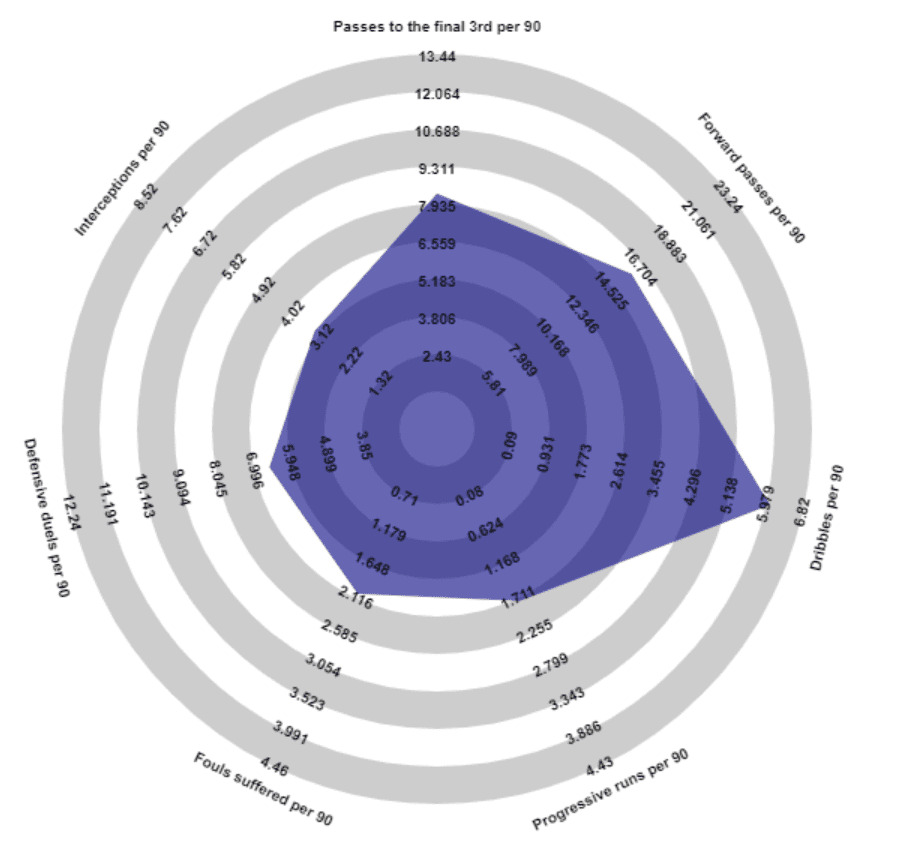
In the below image, we provided you with three heat maps of the player in three different games as follows:
|
Heat map |
Opponent | Date | Position |
On field |
|
1. |
Southampton (H) |
5-2-2020 |
LCMF |
64 mins |
|
2. |
Chelsea (A) |
22-2-2020 |
RCMF |
63 mins |
|
3. |
Burnley (A) |
7-3-2020 |
LCMF |
45 mins |
Although the events of a heat map are not an absolute measuring standard of a player’s movements and habits, from the below three images we could still observe that the presences of Ndombèlé were very irregular. His lacking activity at zone 14 or coverage at the central third was reflected in these maps.

So, what are the issues of Ndombélé? We believe some of them are not quantifiable, which we will explain in this analysis.
To begin with, we have to understand some tactical concepts of Mourinho’s team. The Portuguese manager believed “compactness” was one of the key principles of play. When the players stayed close to each other to defend, they denied penetrations and kept the ball away from the goal, and it also resulted in better chances to recover possession. Therefore, the midfielders of his team had to defend and cover spaces to prevent the defenders from being exposed.
Poor positional awareness
The first issue we would try to highlight was Ndombélé’s positional awareness. This issue happened in different phases and areas of defence. On occasions, the highest-positioned Tottenham players like Steven Bergwijn and Lucas Moura would initiate the press. As a midfielder, Ndombèlé had the responsibility to choose his positioning to maintain a tighter distance with teammates. It was not a complicated setup that involved the basics such as picking the free player and challenge them by sprinting when the out-ball was played.
However, Ndombèlé did not perform well during the press, especially when playing as one of two the advanced midfielders. Seldom did he notice and keep a reasonable distance with his partner. It seemed he was happier to let his teammates do the pressing job. From a macro perspective, his decisions and positioning often became the loophole of the block and contributed nothing to deny the progression of the attack.
Taking the below images as an example, you can see Moura initiated the press on the keeper. Meanwhile, in midfield, Ndombèlé is staying tight with Harry Winks to control the opposition midfielders initially.
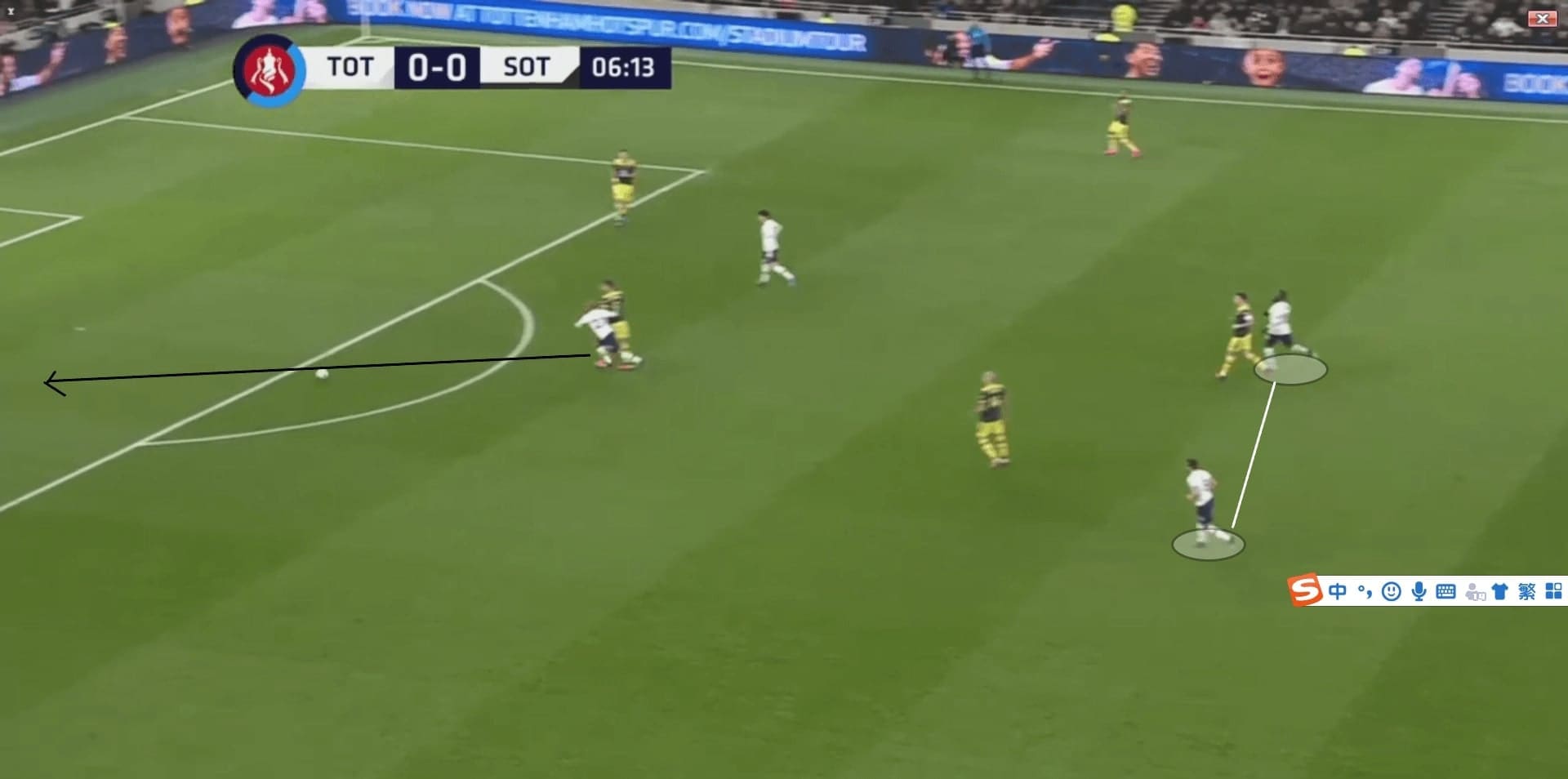
As Southampton moved the ball to the right flank, Winks also jumped to the flank and pressed the ball. However, as Winks’ partner, Ndombèlé showed no effort to reduce his gap with the Tottenham No.8. Their positionings and distance were drawn in the following screenshot.
As a result, when Southampton played the out-ball to the centre, Ndombèlé was in trouble, right at the centroid of the passing triangles, being isolated. He was not quick enough to access the free player at first, while jumping to either option would only open the passing lane to another. The press collapsed because of the poor positioning of Ndombélé.
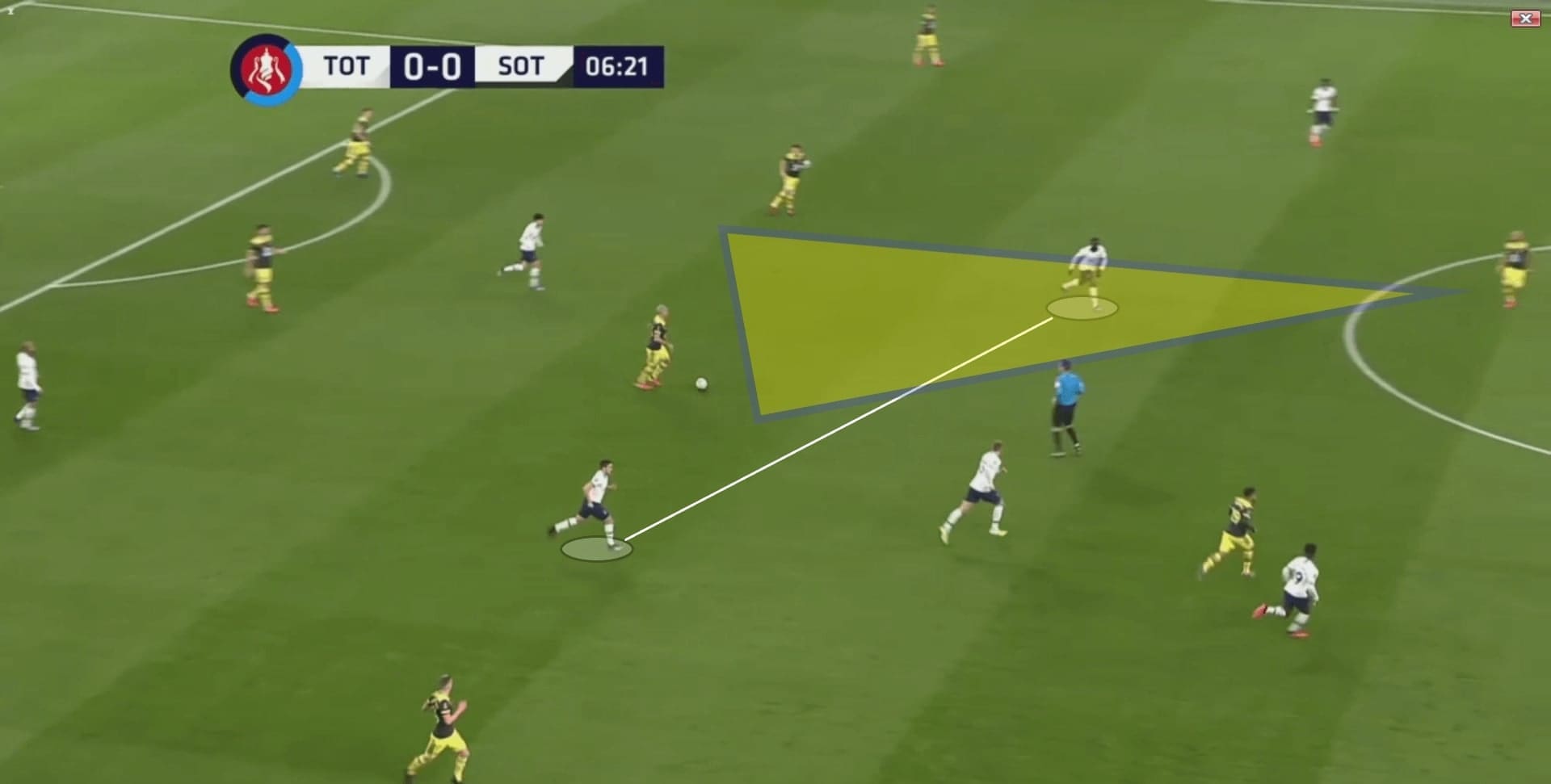
When defending in deeper areas, the job of a defensive midfielder was clearly to cover the horizontal gaps between defenders when any of them left their position. Or, vice versa, the defensive midfielder has to cover the zones in front of the defensive line with relentless efforts. However, when playing this role, Ndombèlé failed to do any of the above.
The Frenchman just left his defence exposed when playing as a defensive midfielder as he was a bit immobile to provide coverage from midfield. As a result of no cover and unity of the block, the opposition found the shooting chances easily by attacking spaces between defenders.
Below, Tottenham’s defence remained as a back three with the wide players approaching the ball at flanks. On the left, clearly Toby Alderweireld was isolated. Meanwhile, this was a 2 v 2 or 2 v 3 situation at the centre; hardly could the rest of the defence shift to Alderweireld’s side.
As the only defensive midfielder, Ndombèlé provided no protection to the defence. He should either move to the gap between Alderweireld and Davinson Sánchez diagonally, which would deny the closet route to the goal, or, engage the player at full speed to make a tactical foul or delay the attack. But Ndombèlé did none of the above, watching the play continue even with seconds to adjust his positioning.
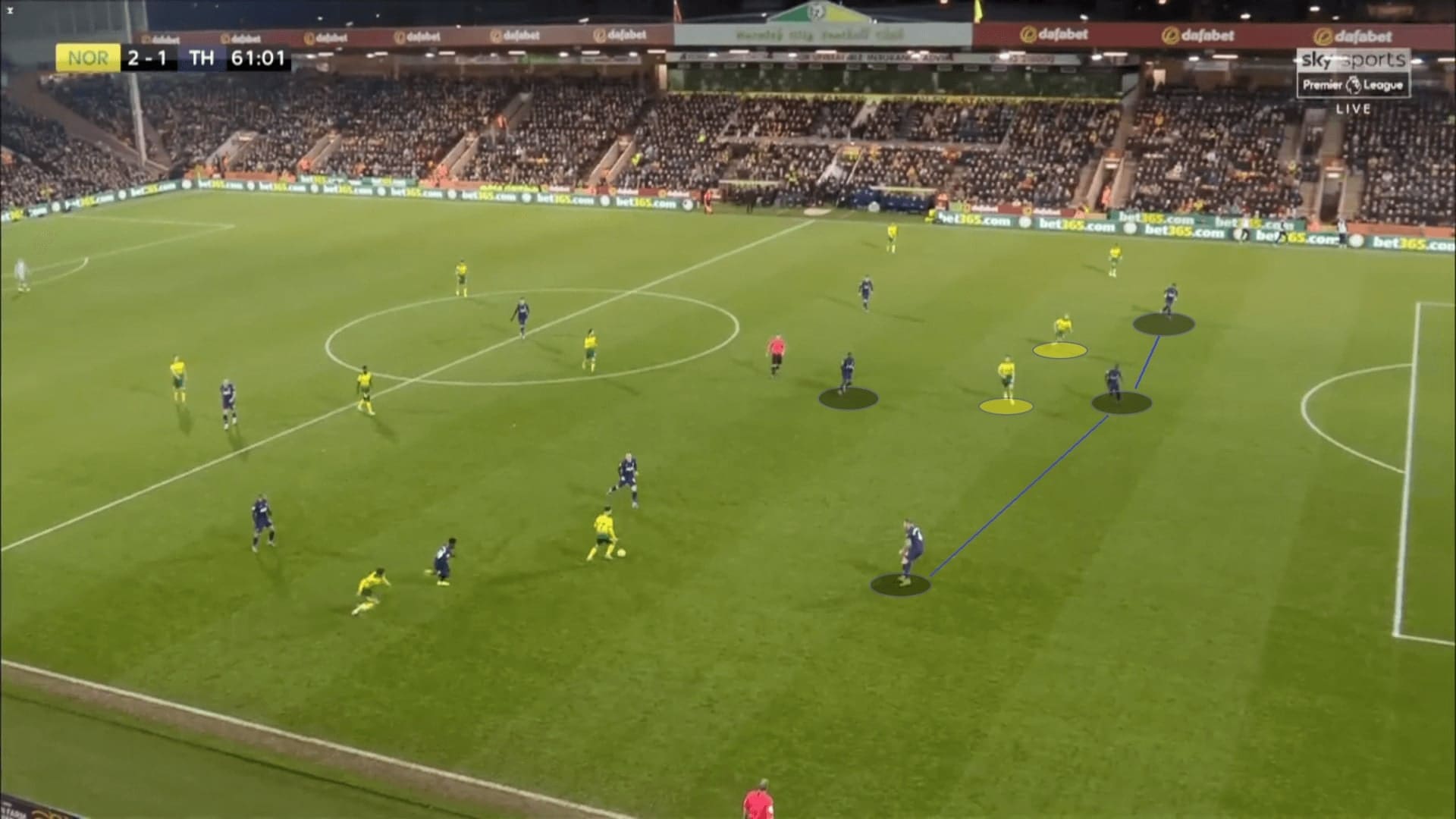
When Tottenham were playing with a 5-4-1, on paper, their defence only had two layers. Therefore, the coverage of the pair of midfielders was vital as they had to take care of spaces around the defence. This was especially important when defending crosses, as the back five’s positioning was usually manipulated by the offensive players. The midfielders should have the autonomy to pick the free target or cover spaces.
In this phase, Ndombèlé was mostly a ball-watcher instead of an active defending player. His sense of danger and defensive awareness were really poor. As a result, zones uncovered by the defenders were exploited by the oppositions in most cases.
In this example, Chelsea were attempting a cross. You could see Japhet Tanganga (No.39) was marking Ross Barkley in the six-yard box initially. The entire Tottenham defence retreated deep because of the aggressive behaviours of the offensive players. In the meantime, Marcos Alonso was coming from the far side.
There was a huge gap between the defence and the midfielders that remained uncovered. This was the space exploited by Alonso to meet the cross. As Ndombèlé kept jogging at zone 14, you would wonder: what was he doing? The area around the penalty spot should be covered by the midfield when the defence is forced deep, and Ndombèlé was very close to that zone. If he was not quick enough to engage the player, then he should have moved to the zone earlier to clear the cross.
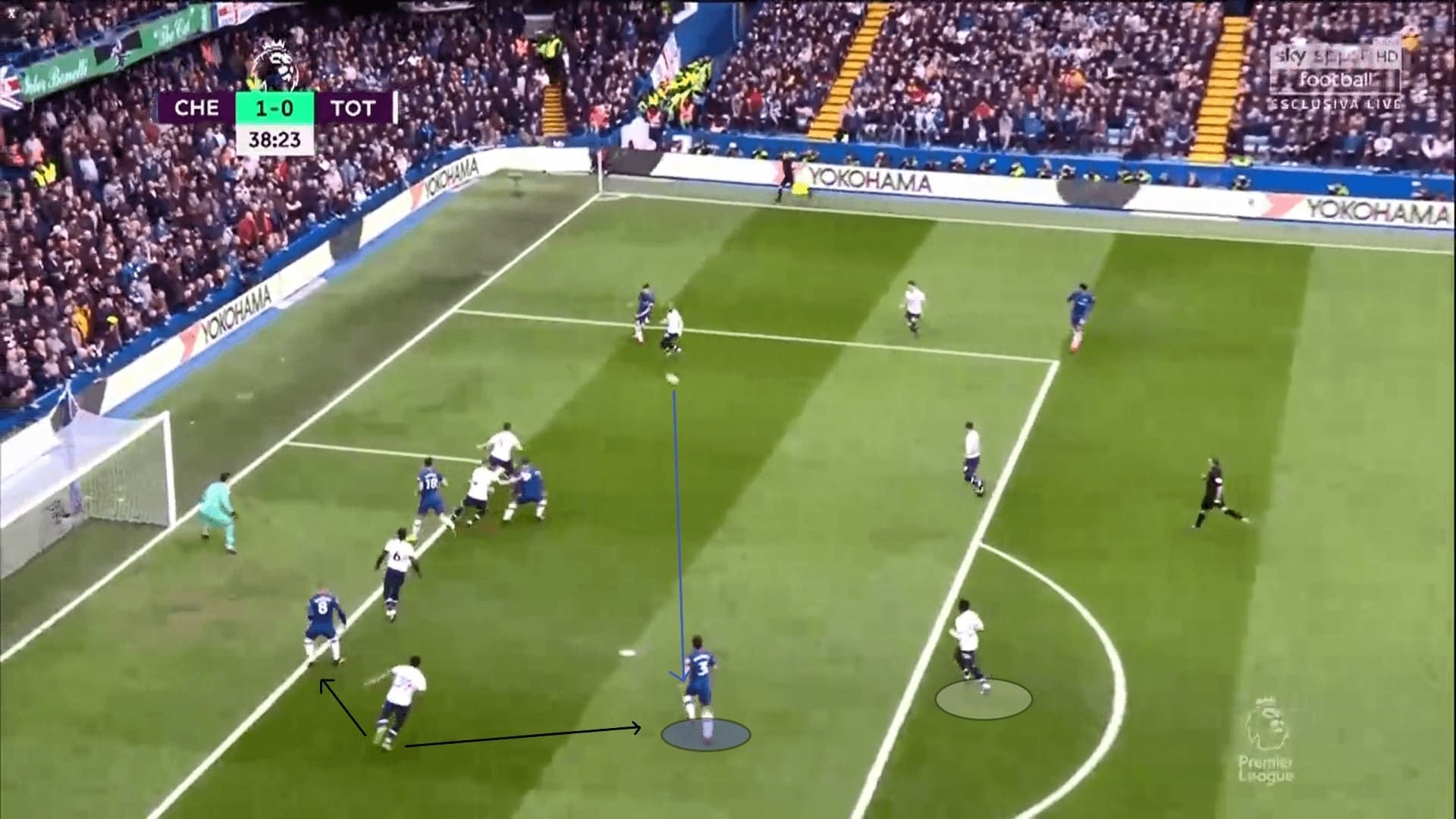
Ndombélé’s capability of judging the situation was weak. In the previous example, we have shown the Frenchman jogging while not covering the penalty spot. Of course, cases varied across situations, like we’ll see in the game against Burnley next. It was equally important to win the second balls too. However, in the first 45 minutes which Ndombèlé played, Tottenham totally lost control of second balls at zone 14.
In this image, you could see the defence of Tottenham stayed very deep to cover the box. Meanwhile, Ndombèlé was around the penalty box but not providing actual protection, merely ball-watching. As a result, he was very slow to react when the ball was cleared at the edge of the box for Jay Rodriguez, who attempted a shot as a result of picking up the second ball.
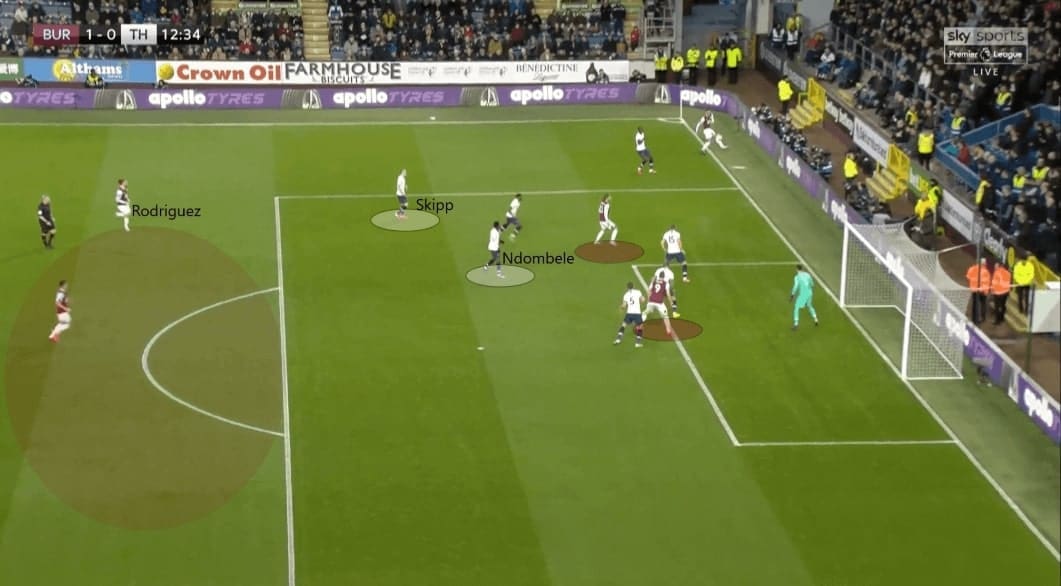
Passive defending
Apart from choosing suboptimal positions when defending, another issue of Ndombèlé was his passive defensive contribution. As mentioned earlier in this scout report, engaging players from a larger distance was not Ndombélé’s strength, but in many situations, the 23-year-old should be more eager to pressure the opposition than defending statically. This gave the opponent/ball-carrier enough time to make a decision, which was always unideal, as they could execute the ideas and create the dynamics as they wished.
Because of Ndombélé’s poor sense of positioning, his attempts to cover passing lanes usually failed due to improper body orientation or the lack of awareness of what was happening behind his back.
In the below scenario, you could see Southampton shifted the ball to the left half-space where the gap appeared in front of the receiver. The point is: why was Ndombèlé not pressuring him? The lateral pass was easily made.
In fact, Ndombèlé could’ve had a very good angle of approach if he had decided to press. Although the press might not recover the ball, at least it could force a decision and make the situation difficult for Southampton.
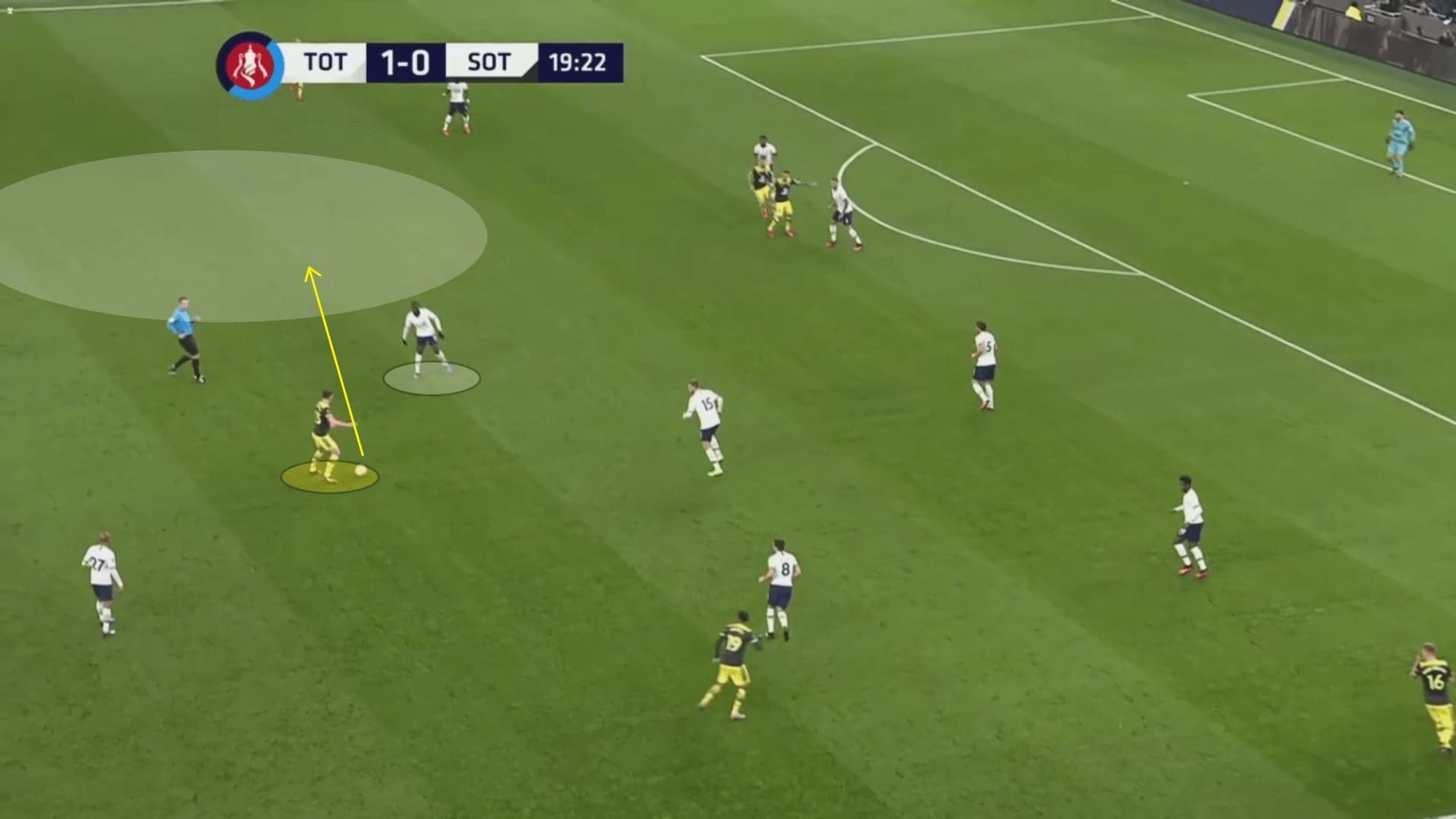
As a result, the receiver was free to receive the ball on the left. Ndombèlé allowed the pass and was uninterested to put instant pressure, hence, this resulted in a well-guided long shot.
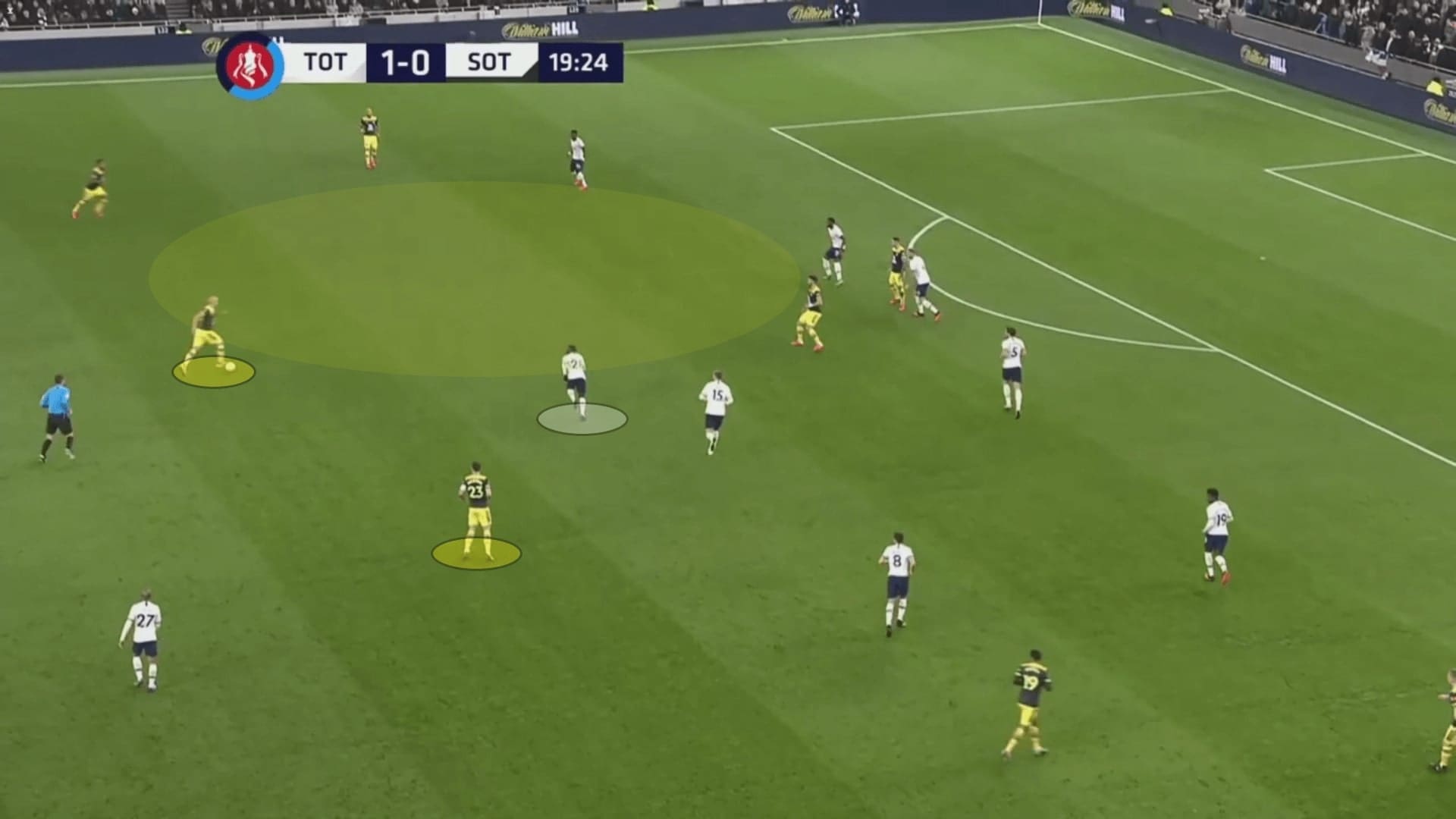
With the physical quality of Ndombélé, we would expect him to defend like a beast, probably similar to Victor Wanyama or Moussa Sissoko. However, it was never the case as he was too passive and not hungry for the ball. What irritated Mourinho was his poor commitment to defending.
In this example, you could see Tottenham tried to compress space at flanks but failed, as a central passing lane was opened. The defensive structure of Tottenham was incomplete and huge spaces appeared at the centre. The solution of Southampton was to find the third man who was running deep, as indicated by the arrow. In this case, even an opposition player ran in front of Ndombélé and the midfielder showed no intention to track the run or cover spaces, instead, he continued to jog.
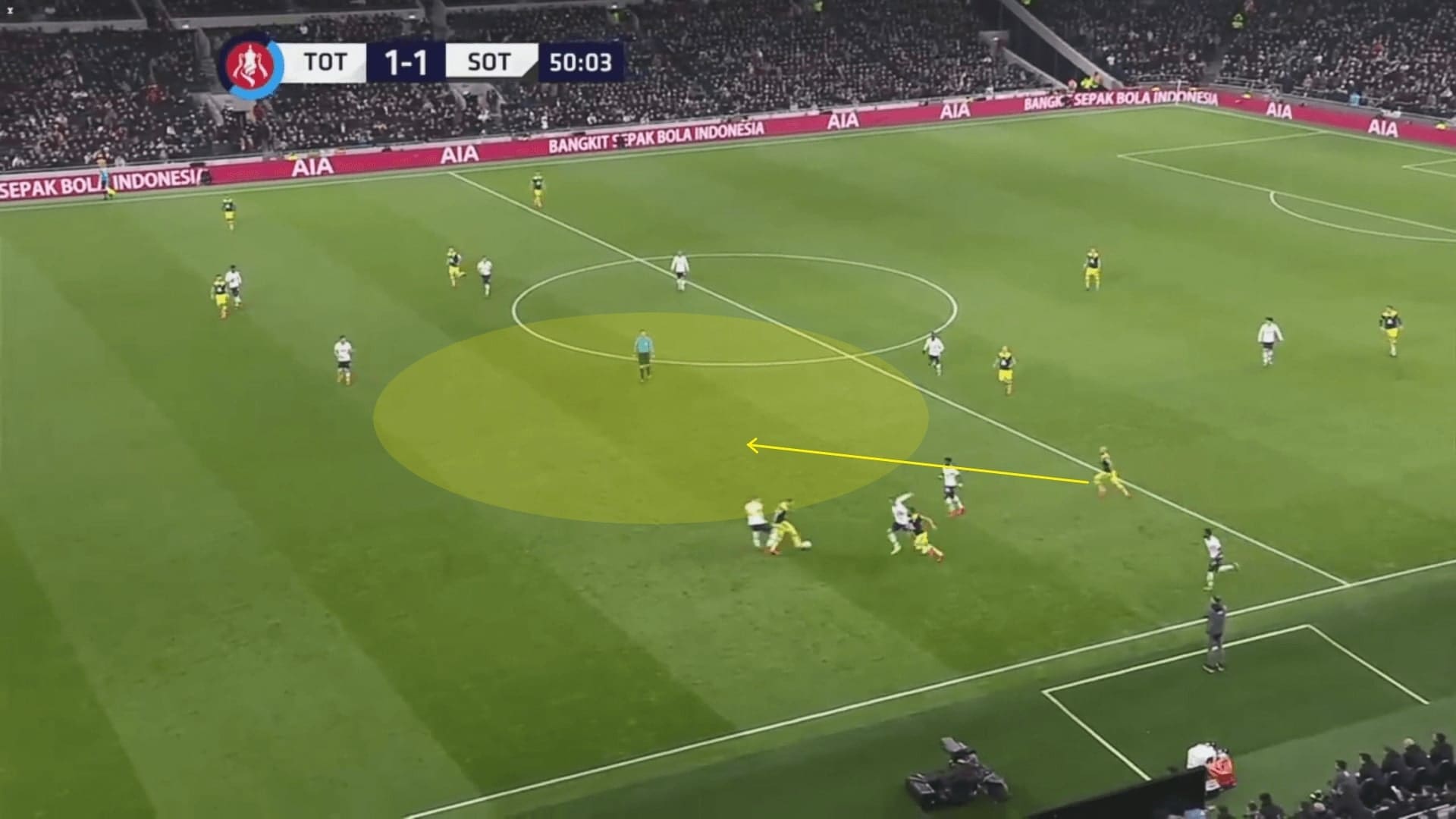
Limited offensive support
Offensively, as highlighted by the stats, Ndombèlé was a really good dribbler, one of the best in the league. However, this strength could be an issue when overused. Ndombèlé often took too many touches on the ball, even in dangerous areas, which made them miss the ideal window to penetrate the opposition or potentially start a transition.
The below example was a ball-losing incident because of Ndombélé’s excessive touches. At the central third, the Frenchman tried to turn but failed to resist the physical challenge from behind. Although Christian Eriksen’s disturbance was also a factor that resulted in the ball loss, there were more options for Ndombèlé than attempting to turn. Playing a wall pass or quick one-two would’ve been much easier solutions.
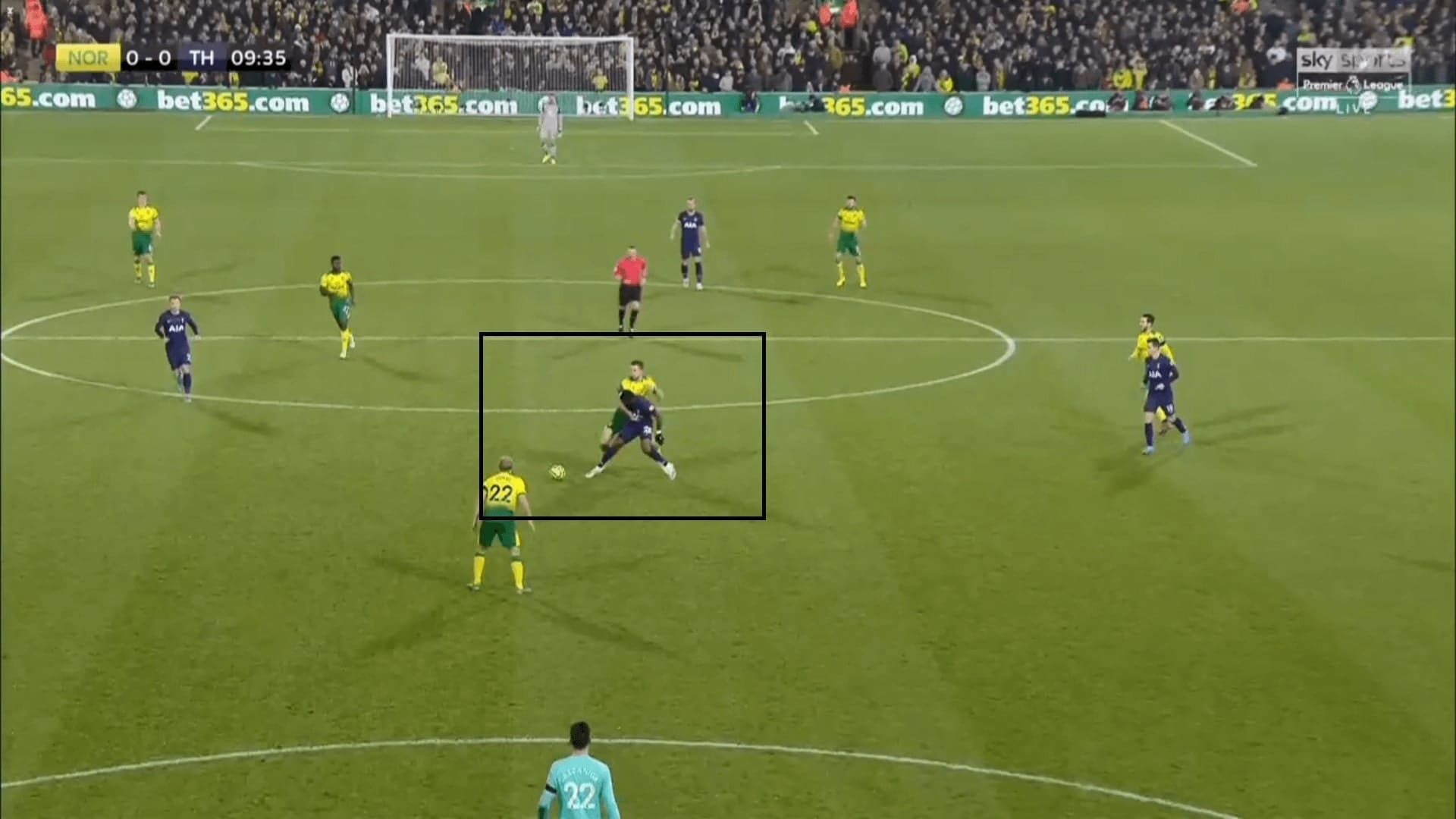
Despite Mourinho’s team not being good at playing out from the back, they always set up in a 3-2 shape in the first phase of attack. However, it was disappointing that the development of attack could not stay centrally. As a midfielder, Ndombèlé always looked for the ball but he was immobile to show up at a good position. As a result, the ball was always forced wide, where they had fewer options for progression and the attack was ineffective.
In this example, you could see the 3-2 shape of Tottenham. However, the ball side midfielder, Ndombèlé himself, did not move to open a passing lane for the first line and Alderweireld was forced to play the ball wide. Hardly could the attack have continued as the body orientation of the receiver was suboptimal. In addition, lacking options in the first phase means Tottenham also lost control of the rhythm, as the opposition’s press could easily force the ball to either flank.
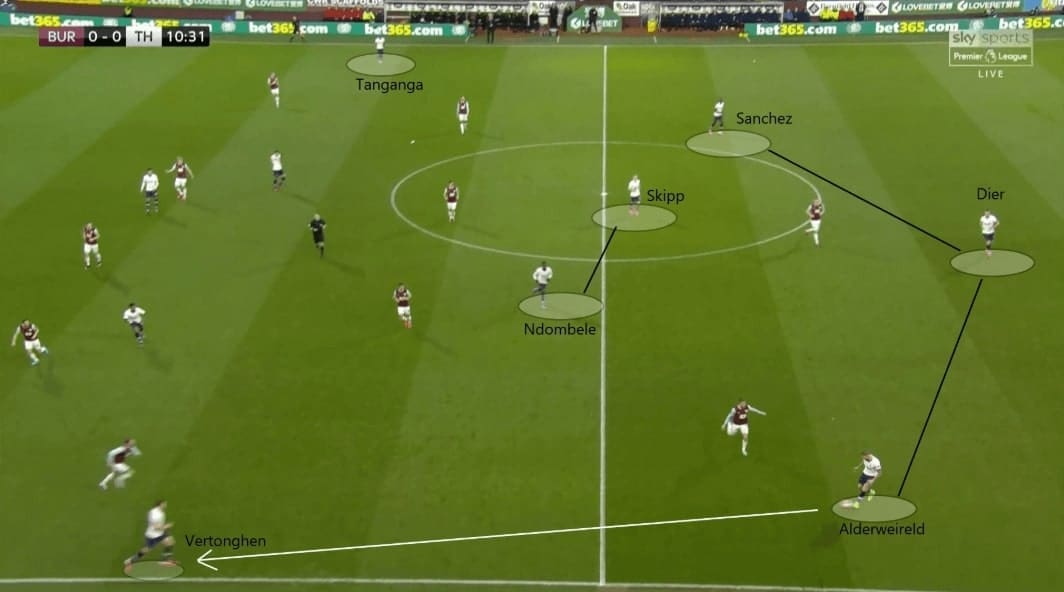
Even removing the complex structures and pressing games as the variables, the immobility of Ndombèlé was still a limitation of Tottenham’s ball progression. This was shown by the below image, where Tottenham needed a goal in stoppage time.
Apparently, Sánchez and Ndombèlé formed a 2 v 1 against Teemu Pukki. Disappointingly, the numerical advantage was nullified since Ndombèlé was reluctant to move into space. He positioned himself behind Pukki, where the passing lane was covered. Of course, eventually, Tottenham were able to play the ball out but the delay was totally unnecessary.
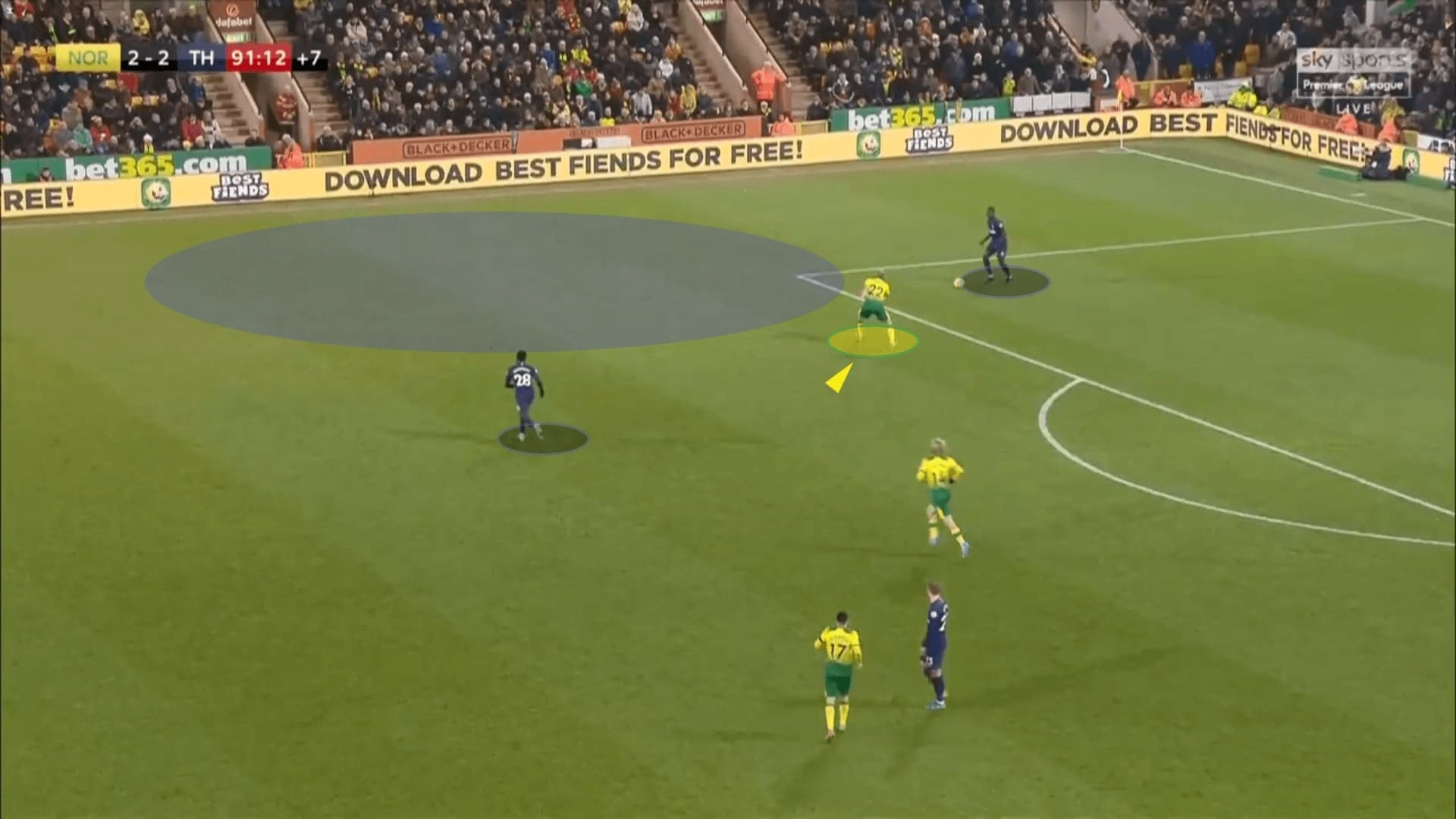
As mentioned, Ndombèlé was too reliant on dribbling to escape from opponents when attacking. As a part of the team, he should have trusted and worked better with his teammates and avoid unnecessary dribbles. This is not only a matter of converting the dribbles to progressive runs but also relates to the effectiveness and efficiency of the attack.
The ball is always faster than the player, which is definitely a quicker progressive method than dribbling. Ndombèlé should remember this and avoid unnecessary dribbles, or else counter-attacking opportunities are easily nullified because of the delay.
The below image shows a scenario of Tottenham’s offensive transition in which Ndombèlé picked up the ball. He was surrounded by three Southampton players while two good passing options appeared on the left. However, the Frenchman made the worst decision, trying to dribble within the pocket of space and failing to do so. The counter-attack opportunity was ruined.
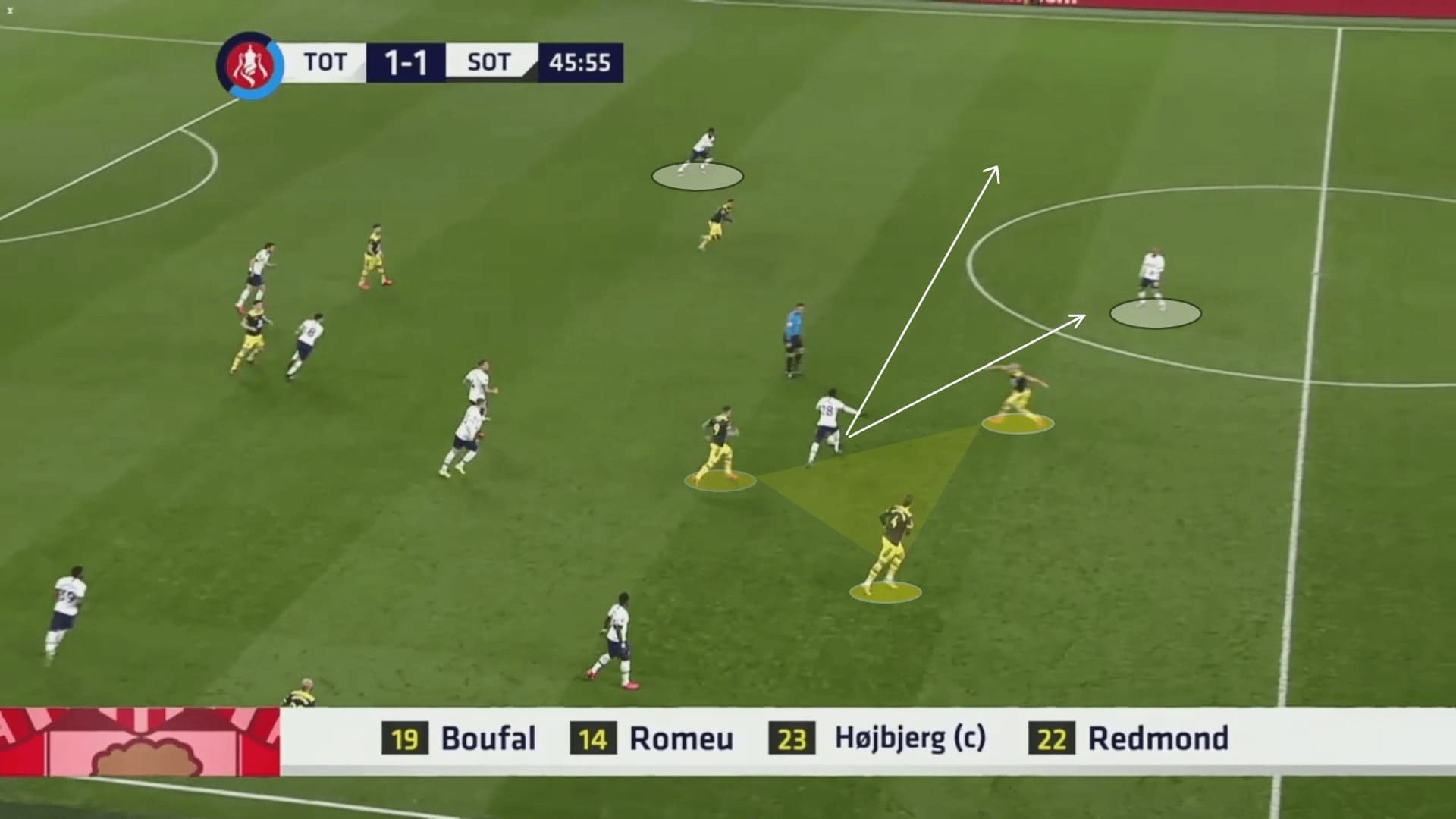
In fact, Ndombèlé does possess the ability to play quick vertical passes under pressure. In this example, he confronted the pressure from two Chelsea players and was quick enough to find Bergwijn through the gaps of the pressing players. In the future, it will be expected from Ndombèlé to cooperate more with his teammates rather than performing solo shows. Undoubtedly, he has the ability to play better.
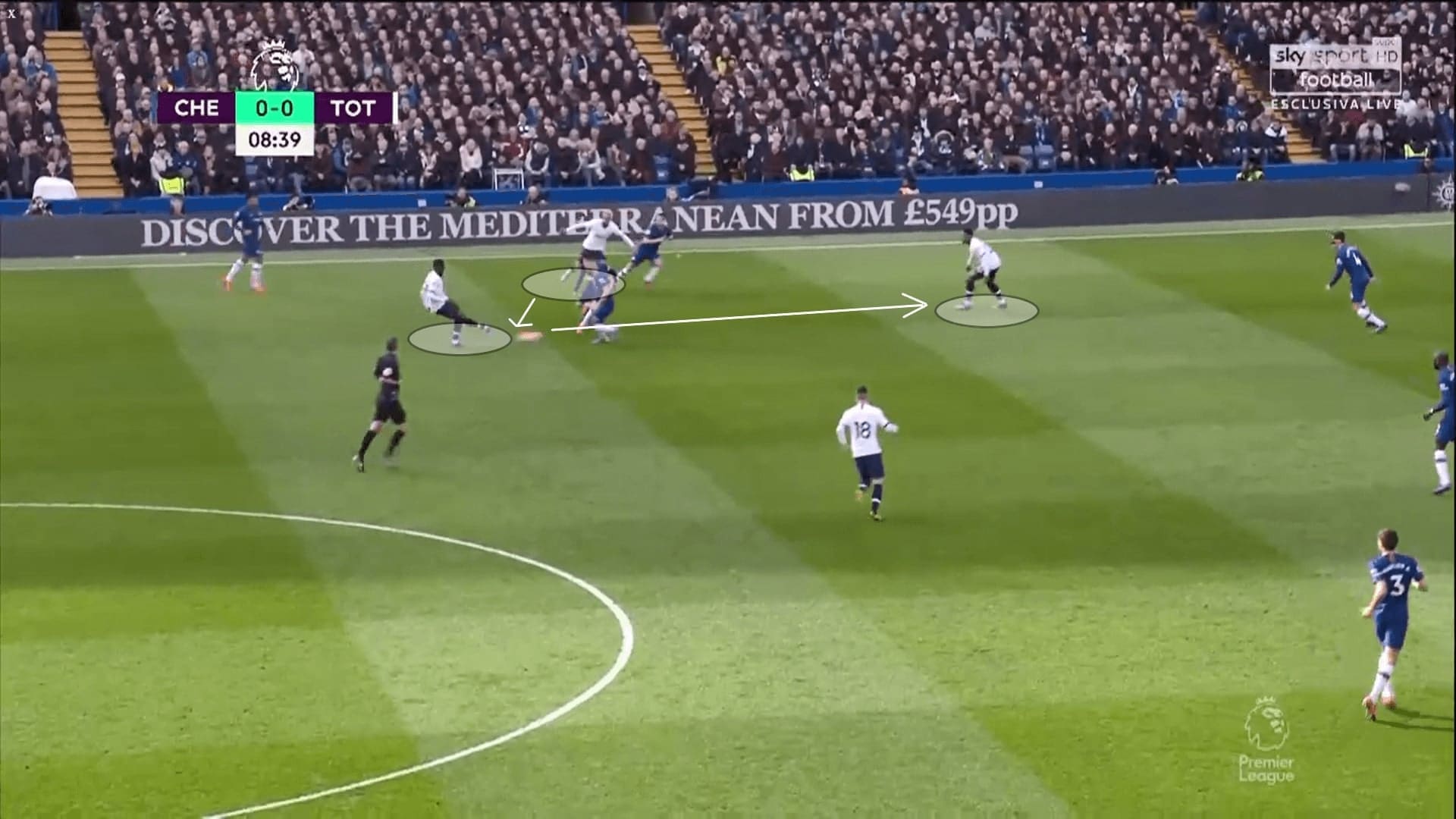
Final remarks
In this scout report, we have shown you the issues of Ndombèlé in this season. The former Lyon player is struggling at Tottenham and has so far failed to demonstrate his full abilities. Of course, Mourinho also understands he could be much, much better, but he had some chances and failed to grab them. The player has to show his contribution to the team and forget about the price tag, as we’ve seen him do against Manchester City at the Etihad in the 2018/19 UEFA Champions League group stage, for example.
Currently, the unsatisfactory performances of Ndombèlé limited the tactics Tottenham could deploy. His passive and immobile defence limited the possibilities of setting pressing traps or even recovering the ball by guiding it wide. Meanwhile, he provided limited qualities offensively. By playing like this, hardly should he deserve a place in the starting lineup. We understand that he is a new signing in a foreign country with a heavy price tag, so it is still very difficult for Ndombélé, but he still has to improve his performances as soon as possible and fight for his place in the team.
You are going to love what Total Football Analysis are bringing you this weekend.
Starting with the Reiverderby in the German Bundesliga this coming Saturday, May 16 – Total Football Analysis will be bringing you live match commentary and analysis of Borussia Dortmund vs Schalke, kicking off at 14:30 UK.




Comments